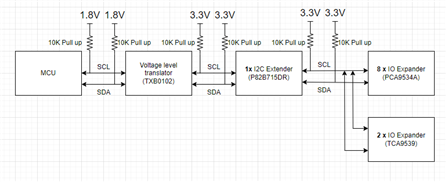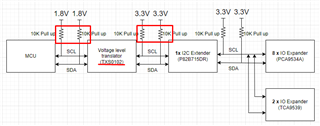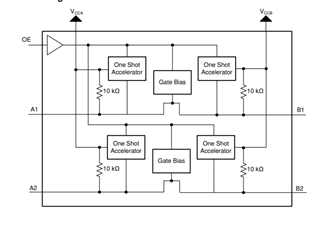Other Parts Discussed in Thread: TXB0102, TCA9539, P82B715, TCA9406, TCA9803, TXS0102, P82B96
Hi Team,
We have implemented the below circuitry in one of our board.

In this application, the MCU is STM32H747 which is 1.8V I2C rail. we have used TXB0102 level translator for converting the I2C bus signal from 1.8V to 3.3V. As there are 10 slaves ( 8 nos of 8 bit I2C IO expander (PCA9534A) and 2 nos of 16 bit I2C IO Expander (TCA9539) ), we have used 1 no of P82B715 I2C extender.
Please check the above implementation. Please let us know if any change/ modification is requred for this appication.
Thanks.



